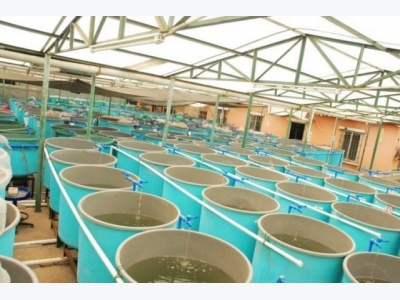Do pineapple trimmings have a place in aquafeed?

A feed product made using pineapple peelings may boost growth, health and production of farmed prawns.
A team of Indian researchers examined use of the waste product and evaluated the role of including levels of manganese-oxide (Mn3O4) nanoparticles (NP) derived from the fruit peelings as an ingredient in aquafeed. “The green synthesized Mn3O4 nanoparticles were dietary supplemented and its effects were further evaluated on survival, growth performance, feed conversion, activities of digestive enzymes, antioxidant response and biochemical blood parameters in M. rosenbergii,” said the researchers.
The findings may offer a way to boost use of manganese-oxide NPs for feed, they said.
“The present work proposed that 16 mg/kg of Mn-oxide NPs could be supplemented for flexible enhanced survival, growth and production of M. rosenbergii,” said the researchers. “Therefore, the data of the present study recommend the addition of 16 mg/kg of Mn-oxide NPs diet to developed prawn growth and antioxidant defense system.”
Why prawns and pineapple
Aquaculture is an expanding field and the giant freshwater prawn, Macrobrachium rosenbergii is a popular species for production as it has rapid growth, lives in a range of salinity, is tolerant to temperature and disease and offers a high commercial value, said the researchers.
Global production has grown from 130,689 tons in 2000 to 203,211 tons in 2011, they said.
Manganese (Mn) is an essential nutrient for growth in several aquatic species, but it often has to be supplemented as insufficient levels are present in water, they said. “Mn plays significant role in better survival, muscle composition, immune response, antioxidant defense and stress tolerance in some fish and crustaceans,” they added.
Various means are used to synthesize Mn, they said, as it is a used in multiple areas and products. However, the most common means of production are also hazardous and involve toxic chemicals.
“Attentions have been recently focused on the development of green chemistry and biological synthetic processes to prepare metal or metal oxide nanostructure by using microorganisms, enzymes, fungi, fruits, plant extracts or even agricultural waste,” they said. “Biological approaches using plants or plant extracts for metal nanoparticle synthesis have been suggested as valuable alternatives to chemical methods.”
Little attention has been given to the use of pineapple peels or trimmings for the synthesis of manganese nanoparticles, said the researchers.
“This abundantly available agricultural waste is composed of polymers such as sugar, pectin, cellulose, polyphenols, which can act as both reducing and capping agents in the preparation of Mn-oxide NPs,” they said. “This novel method has a variety of advantages with low cost, simplicity, potential for large-scale production, green and eco-friendly method without using any toxic chemicals.”
Experiment details
In the experiment, seven groups of prawns were given a pelleted basal diet that included fish meal, soybean meal, groundnut oil cake, wheat bran and sunflower oil with 3, 6, 9, 12, 15 and 18 mg/kg dry feed of Mn-oxide nanoparticles for a period of 90 days, said the researchers. A control group was given the basal diet with no additional manganese-oxide.
At the end of the feeding trial, survival rate, size, weight, feed intake, growth rate, feed conversion ratio and protein efficiency ratio were calculated, they said. And, activities of digestive enzymes were assayed on the first and last days.
Total nitrogen and crude protein were determined along with total muscle protein, total amino acids and total carbohydrate, they said. Metabolic enzymes also were analyzed.
Results
Results were noticeable in prawns getting 3 to 18mg Mn-oxide NP/kg, said the researchers. Supplemented prawns had an almost linear improved growth performance along with boosted final weights and improved weight gain.
The groups getting the experimental diets also had improved feed conversion ratios, they said. About 16.4 to 16.5 was the optimum dietary level of manganese-oxide NP/kg for weight gain and growth rate, respectively.
“Prawns fed with 3.0–18 mg/kg Mn-oxide NPs supplemented diets achieved significant improvement in growth performance, digestive enzyme activities and muscle biochemical compositions, while, the prawns fed with 16 mg/kg of Mn-oxide NPs showed enhanced performance,” they said. “Prawns fed on diet supplemented with 16 mg/kg Mn-oxide NPs showed significantly (P < 0.05) higher total protein level.”
Enzyme activities were elevated in prawns getting the supplemented diets, said the team.
“Prawn fed on diet supplemented with 16 mg nano manganese-oxide showed significantly higher total percentage of nitrogen and crude protein levels,” they said. “Similarly, the muscle biochemical compositions of total protein, amino acids, carbohydrate, lipid and ash contents were also drastically increased in prawns fed on supplemented diet.”
Related news
 Fight fish disease with fish
Fight fish disease with fish Scientists are checking the possibility of limiting the spread of the dangerous fish disease FZT with the help of a very special fish
 Farmed salmon are as fertile as wild salmon
Farmed salmon are as fertile as wild salmon The sperm from farmed male salmon are just as likely as the sperm of wild salmon to succeed in fertilising wild salmon eggs, experiments have shown. Researchers
 Tallow may offer lipid option for salmon feed
Tallow may offer lipid option for salmon feed Salmon may see a new feed ingredient in tallow, which maintains growth and improves fillet quality.